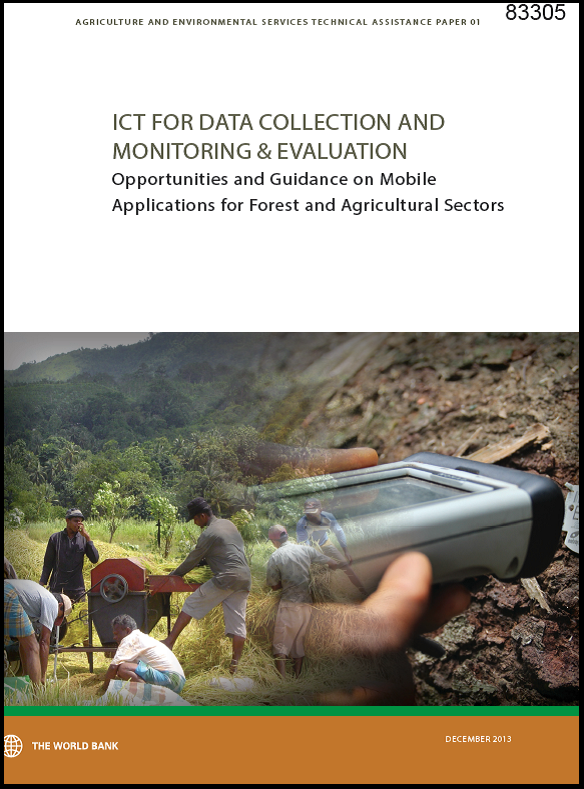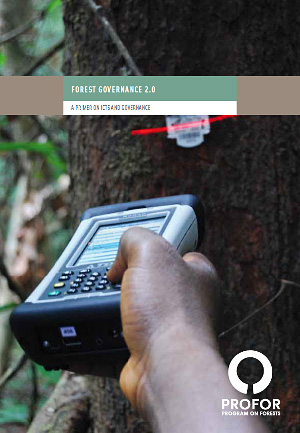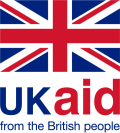You are here
ICT
Share
Attachments
Profor_Moldova_WrkingPaper_0.pdf
Profor_Lao_WrkingPaper (3)_0.pdf
PROFOR_ICTforestGovLaoMoldova_low_0_0.pdf
Keywords
New solutions to persistent problems: ICTs can help protect forests, but they’re only one part of the answer
CHALLENGE
Information and communication technologies (ICTs) play a major role in development, in urban as well as rural areas. Governments have used ICTs to increase transparency, accountability and public participation. In the forest sector, ICTs show potential for addressing poor forest governance, especially the long standing issues of illegal logging and unsustainable forest use.
The emergence of ICT is brought about with increasing prevalence of mobile devices; increasing speed and lower cost of mobile data; the spread of social media; the wider use of free and easy to use software for mapping, data collection, visualization, and satellite imagery. At the same time, ICT tools application in forestry are only pilots and scaling up remains a challenge.
APPROACH
With the goal of deepening its understanding of how best to use ICTs for forest governance, the World Bank supported two pilot projects with funding from the government of Korea through its Trust Fund for ICT for Development (ICT4D). These pilot projects, implemented in the Lao People’s Democratic Republic and Moldova, aimed to develop new tools, and also to cultivate insights into the best approaches for introducing new technologies while facilitating organizational change.
The project results in two working papers:
Information and Communication Technology for Forest Law Enforcement and Governance Case Study: Lao People’s Democratic Republic
Information and Communication Technology for Forest Law Enforcement and Governance Case Study: Moldova
And a report Information and Communication Technology for Forest Law Enforcement and Governance: Lessons from a Two-Country Project in Lao PDR and Moldova.
The reports and findings can be found on PROFOR blog.
RESULTS
While both Lao PDR and Moldova are transitioning economies with significant forestry sectors, they face drastically different problems in promoting good governance of forests.
In Lao PDR, forests have declined substantially over the last few decades, partly as a result of illegal activities by logging companies. Much of the illegally harvested timber is exported to neighboring countries, catering to high-value international demand. By contrast, illegally harvested wood in Moldova is of relatively low value, and is often used domestically to heat homes.
As a result, the pilots promoted ICT applications customized to effectively target these context-specific challenges.
The project in Lao PDR focused on building the capacity of staff at the Department of Forest Inspection (DOFI) in using existing internal systems, particularly for safer and faster file sharing. Medium and higher level applications included an online system for reporting illegal activities, to replace the manual version; a Facebook page to share DOFI activities with the public; and a data collection program using mobile phones and Global Positioning System (GPS) information to accurately verify reports of forest activities.
In Moldova, the project collaborated with the Forest Research and Management Institute (Institutul de Cercetări şi Amenajări Silvice, or ICAS), which falls under the supervision of Moldsilva, the national forest management agency. ICAS developed two Web-based applications: (1) an online reporting tool that automatically calculates tree volume, to replace the existing but time-consuming and error-prone manual system; and (2) an online database of all forest plots managed by Moldsilva.
In both countries, the teams found that maximizing the potential of these applications depended not just on the viability of the technology itself, but also on its implementation. The report’s recommendations include the following:
- In addition to considering local capacity and budget constraints, plans for using ICTs to improve forest governance need to be part of wider, national-level e-government and open government initiatives.
- Forestry agencies should hone their use of ICTs for internal purposes, but also communicate openly with stakeholders in order to gain widespread understanding and support for forestry programs.
- ITCs application should be demand-driven and accessible. In addition to transparency, information and data provided should be accessible and targeted to certain users.
- Flexibility is required when adapting to new technologies, which may entail investing in new skills and activities while de-emphasizing those that have become redundant. This applies to donors attempt to scale up successful ICTs applications.
- Building partnerships with diverse stakeholders promotes sustainability and useful innovation. Engaging with innovative private sector operators, research institutions, civil society organizations (CSOs), as well as individual “hackers” can bring new innovation.
- Finding the right entry points for reform is critical. Instead of choosing between a gradual approach and immediate restructuring, the best solution may involve small, gradual reforms that lead up to larger, agency-wide attitude changes.
- One oft-repeated mistake is to assume that, if an organization creates or builds a new tool, then people will use it. Any ICT strategy should not be driven by the belief that modern equipment alone solves an agency’s computation or communications problems. Real development progress requires changes in institutional readiness and structures, in data availability, and, finally, in the technology itself. None of the three will lead to major changes by themselves.
- The ubiquitous technology improvement allows for two way communication between forest agencies and individuals, implying a technology induced empowerment and decentralization. Thus, engaging in a strategic communication for monitoring efforts requires agencies to take into consideration of information access for different audience groups.
- Forest agencies need to leverage intermediary institutions and partners. Intermediaries such as media and civil society organizations can help forest agencies promote good governance more widely and increase demands for accountability and transparency. Thus, in order for intermediary institutions to better play their role, forest agencies need to provide them with forestry-specific knowledge and expertise
- Forestry institutions need to be mindful of information security, and to protect the privacy of persons who anonymously report illegal logging or corruption.
- Pilots may be needed, but they should be followed by scaling up and monitor. The field of ICT for development is rife with pilots, many of which are not properly evaluated and have inadequate plans for scaling up (that is, “pilotitis,” the tendency to support short-term experiments aiming at demonstrating proofs of concept).
Well-managed forests can play a vital role in combating climate change, maintaining livelihoods, and reducing poverty. While the answer to good forest governance may not be as simple as “There is an app for that,” ICTs can be valuable in ensuring that we continue to enjoy the many benefits of forest resources.
For stories and updates on related activities, follow us on Twitter and Facebook, or subscribe to our mailing list for regular updates.
For stories and updates on related activities, follow us on twitter and facebook, or subscribe to our mailing list for regular updates.
Last Updated : 02-24-2017

Share
External Related Links
Keywords
Authors/Partners
ICT Applications for Data Collection and Monitoring and Evaluation (M&E) of Rural Development Projects
CHALLENGE
Recent innovations in affordable information and communication technologies (ICT) have led to increased interest in using crowdsourcing to collect data, opportunities for more efficient data collection and information dissemination, and reforms in information management within public agencies. Many of these tools offer control and validation features, allow for georeferencing, and allow for mapping of social and biophysical data in the field at a lower cost.
Electronic data that can be easily manipulated and replicated is particularly interesting in forest landscape projects, where interventions cut across sectoral boundaries—such as forests, energy, agriculture, and environment—since electronic data management allows for efficient cross-agency use of data.
However, questions and challenges remain. Many systems and applications are developed as pilots without adequate consideration for scaling up. Selecting the right application among a proliferation of tools can be daunting. Specialists in rural development are not necessarily aware of application options.
APPROACH
The project has a general goal of showcasing the potential and application of ICT in data collection and M&E for Bank staff, external partners and governments. The project aims to assist development practitioners in selecting appropriate technologies and applications for data collection and M&E, improve the quality of knowledge on ICT applications, and inspire the use of these tools in development projects via information distribution. This will lead to better interventions and improvements in program and policy design, implementation, and output and outcome tracking.
RESULTS
• Output 1—A peer-reviewed analytical report that reviews the most prominent data collection and monitoring and evaluation applications (focusing on cellular phones), and service providers available for forest and agricultural interventions. The report, “ICT for Data Collection and Monitoring & Evaluation—Opportunities and Guidance on Mobile Applications for Forest and Agricultural Sectors,” helps practitioners select the most cost-efficient tool that best fits their specific data needs.
• Output 2—A database of application providers with key features and filters to search and compare products. The information captured includes key features of an application when developing a system (for example, offline capacity, GPS capable, and platform), thus it addresses both the advantages and the downsides for a particular context. The database is hosted by NetHope Solutions Center, a nongovernmental organization specialized in providing IT tools for development practitioners.
• Output 3—A full-day marketplace event on ICT for data collection and monitoring and evaluation. The event, held in Washington, D.C. on March 2013, and attended by close to a 100 development practitioners and service providers, featured the launch of the report.
For stories and updates on related activities, follow us on twitter and facebook, or subscribe to our mailing list for regular updates.
Author : World Bank Agriculture and Environmental Services [1], PROFOR [2]
[1] http://web.worldbank.org/WBSITE/EXTERNAL/TOPICS/EXTARD/0,,menuPK:336688~pagePK:149018~piPK:149093~theSitePK:336682,00.html
[2] http://profor.info/
Last Updated : 02-24-2017
Share
Related Links
Reports of the Panel of Experts on Liberia, established by the UN
FLEGT Voluntary Partnership Agreement - Liberia
Jobs in the forestry sector in Liberia (Flickr)
Keywords
Authors/Partners
World Bank Africa Region, Liberia's Forestry Development Authority (FDA)
Supporting the Development of Liberia's Chain of Custody System
CHALLENGE
The objective of the national Chain of Custody (CoC) System is to capture the economic potential of the Liberia forest sector and its associated benefits for rural livelihoods and national growth through a comprehensive monitoring system ensuring that wood products and associated revenues are tracked down and accounted for. The CoC allows the tracking of logs harvested in the forestry concessions in Liberia, from the stump to the port. In addition to the tractability of commercial timber, the CoC controls the legality of log export and ensures that all taxes and fees related to the logging concessions are reported and collected.
The CoC is considered a crucial governance and transparency initiative, mandated by law in Liberia, and was a requirement for the lifting of the UN logging ban on Liberia. It provides a foundation for the Liberian Extractive Industry Transparency Initiative (LEITI) and the Voluntary Partnership Agreement (VPA) that has been negotiated and signed with the European Union and is due to be ratified.
APPROACH
Société Générale de Surveillance (SGS) was hired in October 2007 to build, implement and eventually transfer the CoC system known as LiberFor to the Forestry Development Authority (FDA).
SGS is responsible for the following services:
- Control logs and wood products from stump to point of export or domestic market, and develop and maintain a computerized CoC information system;
- Invoice and monitor all forest payments related to log, wood production and trade;
- Issue timber export permits upon confirmation that the shipment originates from registered harvesting area and all relevant forest payments have been made to the Central Bank of Liberia;
- Provide training to FDA counterpart staff and other relevant government staff in the Ministry of Finance, Central Banks and Ports Authority.
In addition to providing support for Liberfor in 2010-2011, PROFOR committed to sharing lessons from the development of this chain of custody system on its website.
RESULTS AND NEXT STEPS
- Between 2009 and end of 2012, almost 370,000 m3 of timber were exported under the CoC system. In 2012, stumpage, export and other fees and taxes collected by the CoC system generated almost $9 million in revenue for the Government of Liberia. Over the 2008-2012 period, the system secured $27 million in net state revenue (gross revenue, minus the CoC management fee).
- FDA personnel have been incorporated into SGS operational teams in field offices and at SGS headquarters.
- The system has been developed to adapt to the requirements of field operations, from the trees’ felling to the export of logs.
- Training of FDA staff and independent block verification and data processing is preparing the ground for a gradual transfer of responsibilities to FDA.
The viability of the CoC system was challenged initially by the slow roll out of concessions -- and resulting slow export of timber -- and insufficient numbers of officers, trainers, monitoring vehicles and offices in the field. A number of daunting forest governance and logitical issues, from controversy surrounding Private Use Permits to rehabilitation of roads and ports, remain ahead.
The system however has been continuously refined to tackle difficulties. For example, Standard Operating Procedures have been added to handle new challenges such as in-country change of ownership or cross border shipments. And the barcode has been reworked from 12-digits to 8-digits to reduce the number of barcodes errors.
Liberia is preparing to transition to a Legality Verification Department that includes LiberFor.
A field note summarizing lessons learned from the establishment of the chain of custody was published by PROFOR in February 2013.
For stories and updates on related activities, follow us on twitter and facebook, or subscribe to our mailing list for regular updates.
Author : World Bank Africa Region, Liberia's Forestry Development Authority (FDA)
Last Updated : 02-24-2017

Share
Related Links
Forest Governance 2.0 (July 2011)
Attachments
Keywords
Authors/Partners
Authors: Tuukka Castrén (team leader, senior forestry specialist) and Madhavi Pillai (natural resource specialist) supported by Nalin Kishor (senior natural resources economist) at the World Bank. Funding: World Bank FLEG trust fund, PROFOR and the Government of Finland
Information Management and Forest Governance
Information technology and management in forest governance -- innovations for improved forestry outcomes
CHALLENGE
Improving forest governance and reducing forest crime requires reforms regarding: legislative framework, public institutions, private sector operations, and civil society participation to name a few. Many countries have already reformed their forest legislation and institutions. It is essential to recognize that in order to actually achieve improved forest outcomes, reforms need to be both planned properly and implemented effectively at all levels.
Modern information technology, including remote sensing and field level applications, can help in this regard. Such technology has proven valuable in many fields in promoting good, transparent and equitable governance, and is also required to ensure sustained implementation of reforms. Some countries have introduced systems, for example, to better track log sales and timber flows, use remote sensing technologies to track encroachment, and engage with local communities with mobile applications. In many cases, the role of information and communications technology (ICTs) in the forest sector has been limited to providing information on ‘how much forest is there’ and how to manage the resource. However, information management is not only about new technologies. Efficient dissemination of forest-related information can also be done through more traditional media if properly planned. Whatever the technology chosen, improving information management is an essential part of forest governance reforms.
APPROACH
To address these challenges, the World Bank’s Forests Team, supported by PROFOR, prepared a study on information technology and management in forest governance, building on the framework developed in Building Blocks for Good Forest Outcomes: An Analytical Framework for Governance Reforms (2009).
The project’s objectives are to: identify and apply ICT applications to improve forest governance in the Lao People’s Democratic Republic (Lao PDR) and Moldova; and strengthen ICT development capacity in the forest sector in these countries. The project also provides field-tested experience for further support by the Bank and other development partners.
RESULTS
The resulting study, titled Forest Governance 2.0: A Primer on ICTs and Governance, explores a whole range of ICT uses, including increasing public participation and improving law enforcement and economic efficiency, to improve governance in the forest sector. It draws on current and planned initiatives, both from within and outside the sector, from secondary sources and country reports from Finland, Ghana and Uganda. The study emphasizes simple, low-cost tools that will spur the demand and supply of good governance by increasing the engagement of key stakeholders in the process. The report identifies 10 key principles for developing ICT interventions for forest governance.
The experiences from Lao PDR and Moldova demonstrate that a gradual, stepwise approach to e-development is feasible or even preferable compared to large-scale sudden changes, particularly where existing e-knowledge is limited. Once initial awareness has been built, more ambitious ‘leapfrogging’ can be launched.
This project has already had a notable impact on Bank engagement, particularly in Moldova, for which the Bank has developed a forest policy note that focuses on institutional development, including improved information management. In Laos PDR, work undertaken thus far has informed both Bank operations and bilateral projects in the country.
Findings will continue to be shared on this page as they become available. Follow us on twitter or join our mailing list for regular updates.
For stories and updates on related activities, follow us on twitter and facebook, or subscribe to our mailing list for regular updates.
Author : Authors: Tuukka Castrén (team leader, senior forestry specialist) and
Madhavi Pillai (natural resource specialist) supported by Nalin Kishor
(senior natural resources economist) at the World Bank. Funding: World Bank
FLEG trust fund, PROFOR and the Government of Finland
Last Updated : 02-24-2017








